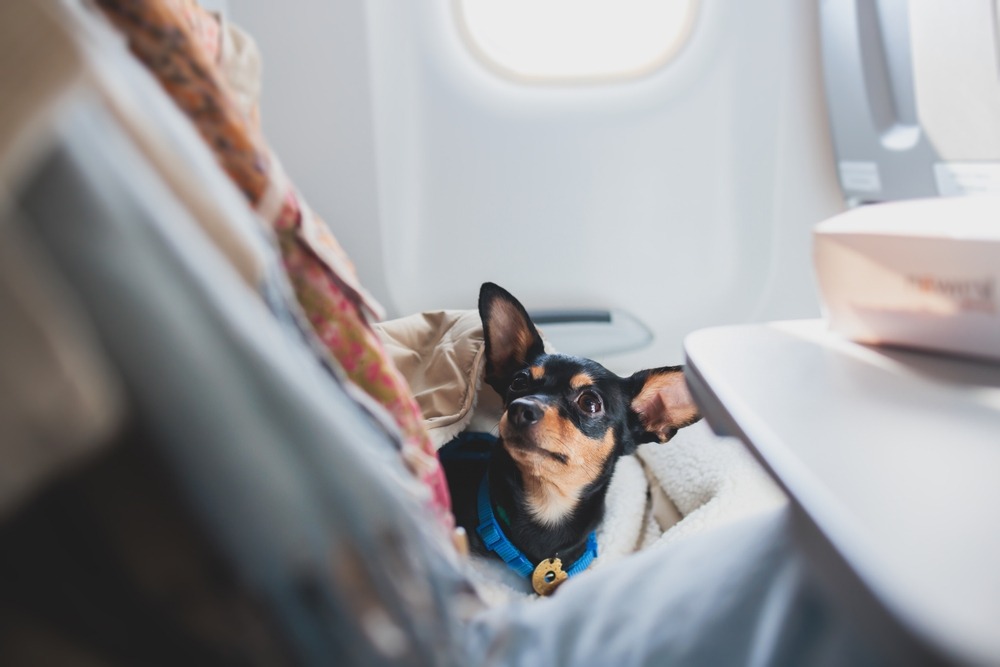As American Airlines makes it easier to travel with pets, what will this mean for passengers?
The next time you’re on an American Airlines flight, don’t be surprised if things look a little, well, furrier.
American recently updated its pet policy, which could serve as encouragement to travelers—specifically, those who normally leave their small friends at home or try to pass them as support animals—to bring them along.
Larry Yu, professor of hospitality management at the School of Business at George Washington University, believes there are two reasons for this change. The first has to do with customer feedback and the desire to enhance passengers’ comfort and convenience. Before this change, American—as well as all other airlines—required travelers to treat their pet as a carry-on. Passengers would then be required to check—and pay—for their usual carry-on.
Although passengers will still need to pay a $150 pet fee with this new policy, they can now take pet, carry-on and one smaller item on board.
Read More: Las Vegas Airport Tests Self-Service Security Checkpoint
The new policy is also a deterrent to those who might falsely claim their pet is actually an emotional/physical support animal, which causes the airline to lose money (support animals fly free) and time (airline approval of support animals is needed via form submission). It’s worth noting, though, that the new policy could also result in fewer bags being checked in, a revenue loss for American.
Much like American Airlines, convention centers place a similar demarcation between support animals and pets. For example, according to Las Vegas Convention & Visitors Authority, operators of Las Vegas Convention Center, service animals, defined under the Americans with Disabilities Act (ADA) as “a dog or a miniature horse that is individually trained to do work or perform tasks for an individual with a disability,” are always welcome.
Under the ADA, “comfort,” “therapy” or “emotional support” animals do not qualify as service animals. For any animal to come to a show or booth, its passage must be approved by show management, then the convention services manager.
Similar rules exist at Austin Convention Center. Although, according to Derick Hackett, senior public information specialist at Austin Convention Center Department, there isn’t a substantial number of attendees who seek approval for non-service animals. Last year, they received less than five requests.
Based on American’s experience, Yu suspects other airlines may change their policies, too. He pointed to hotels as an example, many of which have steered to a more pet-friendly image over the years.
Still, Yu says, only a very small percentage of pet owners currently fly with their pets in the United States. “Hotels cater to a broader market in terms of a pet-friendly image. Airlines have taken note of that and are trying to be positive in the minds of pet lovers, especially those who just can’t live without their friendly, furry friends. That’s one kind of a phenomenon we are following very closely.”
One potential pitfall here, Yu believes, is if the reception to this change is too good, thus triggering what’s called “induced demand.” Travelers who might normally place their pets in a pet hotel or leave them with pet-sitters may start bringing them along for the ride. This could be a problem if millions make that change at once.
Oh, and there’s also the possibility of lots of pets making a mess of the airplane.
“If demand increases, this will add to management services, operations, and it will also add to the cleaning fees for those cabins,” Yu says, pointing out that sometimes aircraft have very short turnaround times—often less than an hour—which could increase the operating cost of cleaning.
Ultimately though, despite it being a small niche in terms of American’s overall customer base, Yu doesn’t downplay the eased rule’s impact on customer happiness. As he puts it, “Incremental things will add to your customer satisfaction.”




